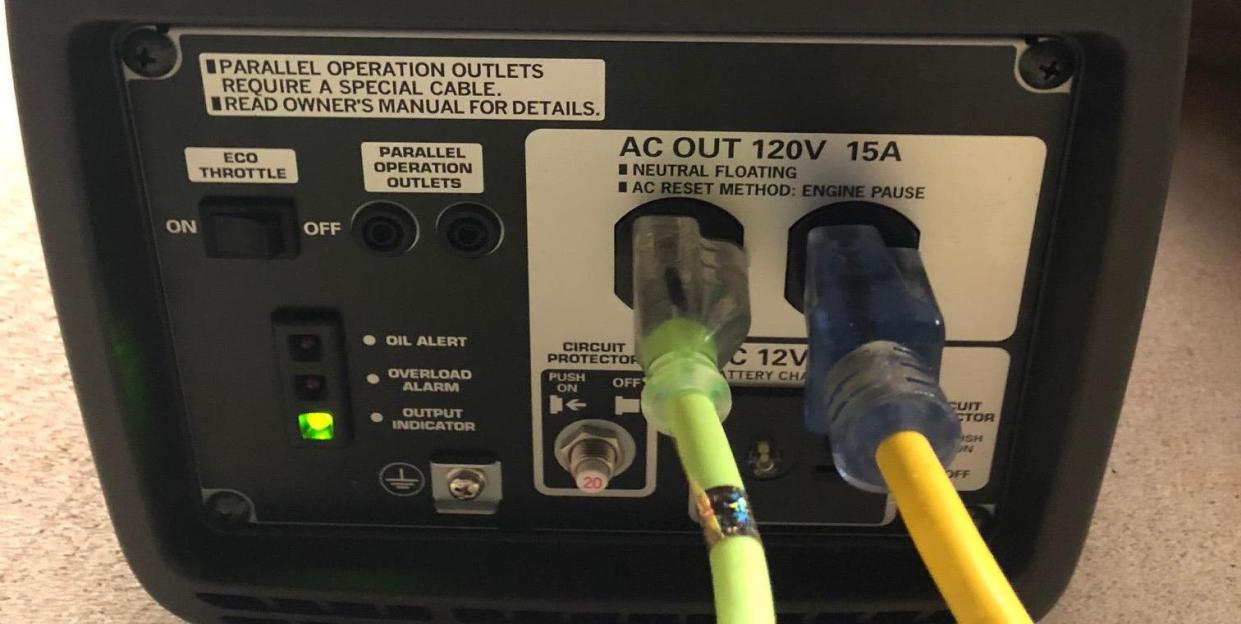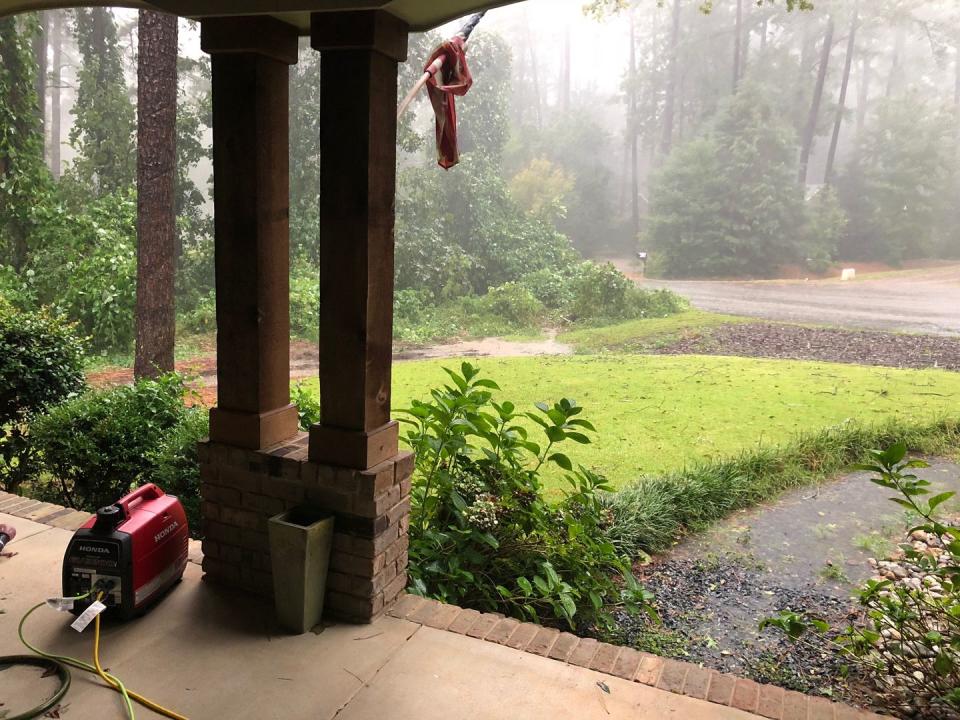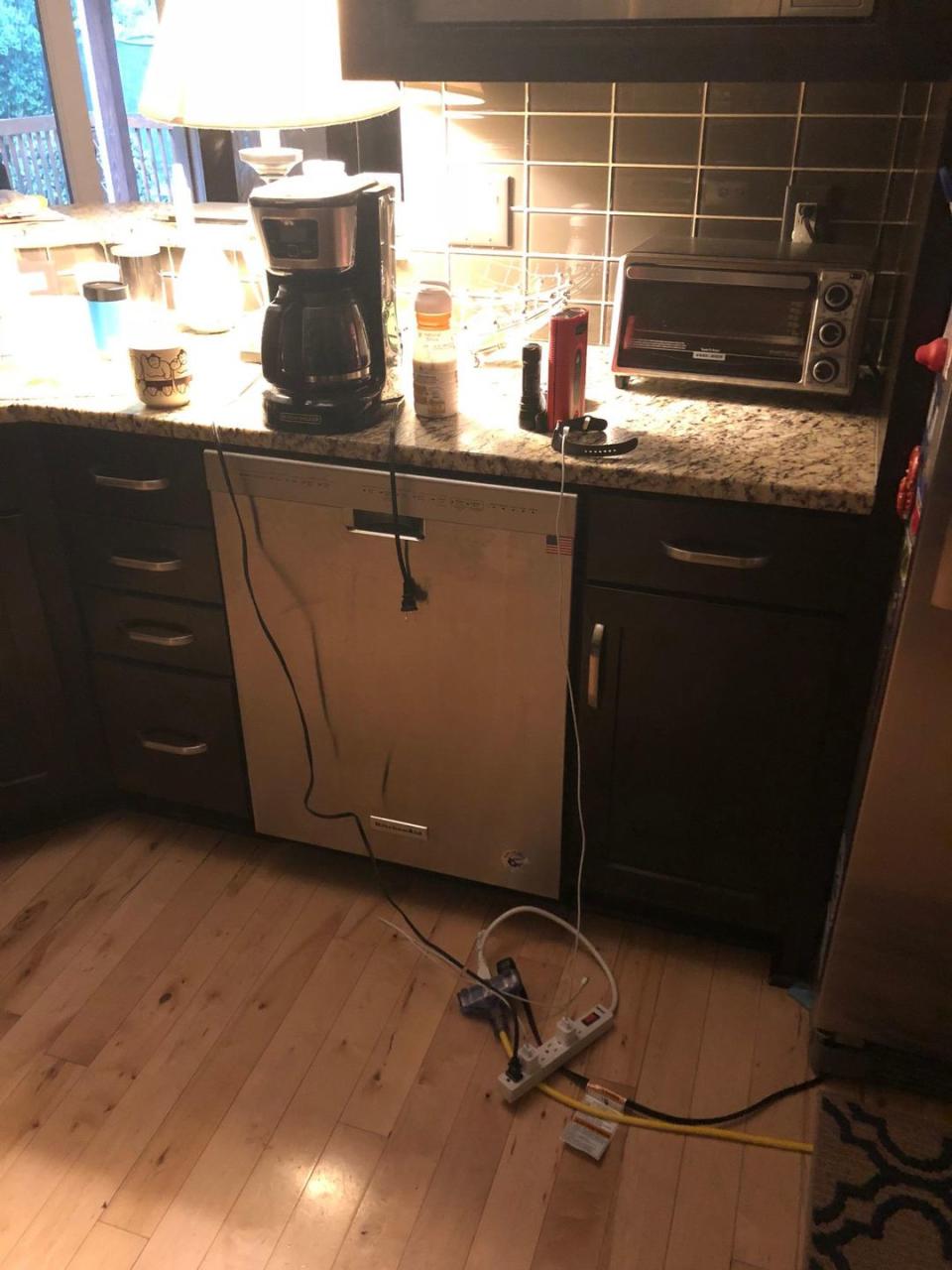The Little Generator That's Getting Me Through Hurricane Florence

This story is about a generator, but it's brought to you by the 2019 GMC Sierra Denali. It’s been four days since Hurricane Florence knocked out the power here in North Carolina, and Verizon seems to be limiting mobile connections to calls and texts. So the GMC’s 4G LTE hotspot has been my primary source of Internet.
The truck, along with my trusty Stihl chainsaw, came in handy for removing a tree that was blocking a neighbor’s driveway. But the real MVP of the last few days-and the reason I didn't climb in that truck and head for someplace more hospitable, like Miami-is the VIP item I bought just last week: Honda's EU2200i generator, a 47-pound tether to civilization.
I’ve never owned a generator. Whenever the power goes out, I always wish I had one. But then the power comes back on and I forget about it until the next storm bears down. Here’s some advice: go buy a generator on a cloudless day in June. Then when the storm comes, you’ll be free to spend five hours at the grocery store waiting in line behind people who’ve suddenly discovered that they need a metric ton of Pepperidge Farm whole-grain honey wheat.
I’m currently on day 4 of Generator Life and I’ve learned a few things along the way. Now that I have some authority on matters of portable power generation, allow me to enlighten you on the finer points of generator selection and operation.
You Want an Inverter Generator
Inverter generators can automatically increase or decrease rpm in response to load. So instead of sitting there chugging along the whole time at 3,600 rpm (the constant rpm that spits out 120-volt AC at 60 Hertz), they can ramp up when a fridge kicks on and then idle back down. That means they’re quieter, use less fuel, and produce much cleaner power. Because the power is essentially filtered through the inverter (AC to DC and back to AC), the sine wave is clean and constant.
Electric devices, especially microprocessors, like clean power. It’s not that a standard generator will fry your TV, but that big Samsung will be happier running off an inverter generator.
You Probably Don’t Need a Huge Generator
This little Honda EU2200i looks like it would fit in a carryon suitcase. From a sheer wattage perspective, it seems dinky. But how much electricity do you need to run, really? Turning on every LED lamp in your house might draw a couple hundred watts. A refrigerator kicking on will momentarily require a lot of power (say, 1,200 watts) but then settle into a constant 200-watt draw.

If you have a transfer switch at your house that will allow a generator to feed the whole place, then by all means, go get a 7,000-watt generator. But here’s what I’m running right now with the EU2200i: four or five bright lamps, a fridge, a tankless gas hot water heater, a TV, three fans, a coffeemaker, and a Super Nintendo. I’ve also run a ¾-horsepower garbage disposal and 1,500-watt electric torch to get my charcoal grill started. The trick is to manage your loads. If you can handle choosing either the electric torch or the coffee maker, for instance, then you can get away with a much smaller generator.
Your generator requirements also depend on your house. I have city water and gas, so I need to run only appliances (including the hot water heater, which just needs to be powered on but doesn’t draw much power). If you have a well and need to run a pump, that might require a bigger generator. If you want to plug in a bunch of window AC units, OK, get a 4,000-watt model. But maintaining almost all the comforts of home probably requires fewer watts than you think.
You May As Well Be Paranoid About Safety

Every time there’s a big storm, people get killed by generators. The main culprit is carbon monoxide: People forget that generators are internal combustion engines and run them in enclosed spaces. The tricky part is that storms that knock out the power also tend to bring precipitation, and you can’t leave a generator out in the rain (see: high voltage).
Many of my neighbors seem to be positioning their generators at the door to their garage, doors open with the exhaust facing out. That seems like not a great example of best practices, since wind could still take exhaust back into the garage. I have mine on an open covered deck, exhaust facing out, but I’m still paranoid that somehow CO will get in the house. So I ran the two extension cords in through a window and closed the window down on a towel to seal the gap. Then, for good measure, I ran an extension cord back to the window and plugged in a carbon monoxide detector. You should have a few of those in your house anyway, but definitely designate a plug on your power strip to a CO detector when you’re running a generator.
Get Big Cords
Electricity is like water flowing through a pipe. The bigger the pipe, the better the flow. Standard extension cords are 16-gauge, which is pretty slender (when it comes to wiring, a smaller number designates a thicker cable). I have a heavy 12-gauge cord with a three-outlet tip running into the fridge and coffee maker. Then I have a 14-gauge going to a power strip in the living room. A TV and lamp are plugged directly in there, with 16-gauge cords snaking all over the house (and outside) to run distant lamps and fans. You also want to keep the cords as short as you can-don’t run a 100-foot cord to power something 20 feet away.

The cords do get messy, but here’s another tip: throw rugs are your friend. I’ve relocated a lot of throw rugs to temporarily bury extension cords and keep me from tripping over the cord that's running to my World’s Greatest Dad lamp up there on the counter.
Fill’er Up
Since fueling the generator requires shutting it down-I like to keep my gasoline and live wires separate-I try to run it nearly empty and then fill it all the way up to minimize refueling events. The EU2200i is fantastically efficient, so I haven’t done this dance too many times, even over four days. It holds less than a gallon of gas, but on Eco Throttle mode (where it regulates its own throttle depending on loads) it ran last night for nearly 10 hours before I shut it down for a morning refuel.
Pro tip: Gas up, then haul your gas can somewhere far away before firing up the generator again. I also bring a turkey baster with me, which comes in handy when you’re refueling in the dark. At one point, I overfilled the tank but drew it back down to the proper fill level with a couple pumps of the baster. I’m sure there are hand pumps made for this purpose but a baster works fine. Just don’t put it back in your kitchen. That’s the garage baster now.
Shut ’er Down
You don’t need to run the generator at all times. Kill it for a few hours, go take a walk, and your fridge will stay cold. When I finally shut down this VIP storm equipment, I’ll turn off the fuel rather than the spark (the EU2200i has a position on the on/off switch just for this). That will run the carb dry and prevent it from getting gunked up with old gas. Then I’ll put some fuel stabilizer in the tank, stash the little Honda in a corner of the garage and forget about it entirely. Until the next time the power goes out, and I appreciate what a luxury it is to turn on the lights.
('You Might Also Like',)

